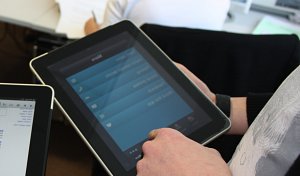Educational IT tools in school should be improved to achieve positive learning outcomes

Björn Sjödén, a researcher from the Educational Technology Group at the University of Lund and Linköping in Sweden, explains how “Most digital learning tools used in schools are unsatisfactory and only test the knowledge the pupils already have,”
Björn Sjödén has a background in the computer games industry and his doctoral thesis “What Makes Good Educational Software?” focuses on a review of different computer games and educational software.
In his doctoral work, Björn Sjödén defines ‘digital learning tools’ as “subject-specific, interactive computer programs that provide feedback to achieve a specific learning objective.”
Björn Sjödén explains: “In a pilot study, we examined the top 100 apps within math and Swedish, and barely half of them could be considered digital learning tools according to our standards, only 17% of which provided some sort of informative feedback. Some were so bad that we, as researchers, would never even consider to test them in class”.
For instance, one of the computer programs to teach parts of speech was tested. The comparison between illiterate 5 years old and others, who could read properly, showed that the first group did better than the second. Essentially, the first group’s 5 years old children guessed better and faster than others who tried to read and spell correctly.
“Probably more than 90% of the learning tools available online are simply test tools. They provide no explanatory information in addition to the correct answer. The pupils often compete against time, but not towards greater understanding,” added the researcher Björn Sjödén.
When it comes to IT technology in the schools, Sweden can be considered among the firsts ranked in a European perspective. The last 15 years saw a heavy increment of technologic tools such as laptops and iPads for pupils in the Swedish educational institutions. However, a report from the PISA (Programme for International Assessment) showed that those students who spent more time using the internet at school or in their free time obtained the worst results in the evaluation of PISA’s standardised tests.
“However, digital learning tools can provide great educational benefits, as long as they do not become books on a screen, but use their digital advantages. This involves providing good feedback, showing that there are different ways of thinking to reach a goal, and presenting consequences that that cannot be demonstrated in a book,” added Björn Sjödén.
Using common examples would help then. For instance, a common task could require calculating the time needed to reach a place from another one, for example a train station. The consequences of a miscalculation can be demonstrated. If we miscalculate, getting 15 minutes in advance to the train station, the consequence will be a wait of 15 minutes. On the other hand, if miscalculating with 15 minutes in excess, we will end up arriving to the station with the train already gone 15 minutes before.
Mr Sjödén organised an experiment with 2 groups of students playing a math game for eight weeks. In this game, both groups had to help a computer digital character to overcome the difficulties in the game. Then both groups had to take a math test: the first group’s test was featuring the digital character previously known in the game while the other group’s test not.
“The pupils that were helping their digital friend were more engaged. They wanted to solve more and harder math problems to help their digital character. Especially low-performing pupils became more motivated. This knowledge should be utilised in digital learning tools,” reports Björn Sjödén.
Sjödén’s research group, ETG, is collaborating with Stanford University and other partners to develop and analyse two maths and one history digital learning tools. The software will be a freeware intended for non-commercial use.
“However, researchers cannot be the only ones leading the way in the development of digital learning tools. If none of the large, well-established companies will, I hope that one of the new enterprises will succeed. The developer who makes the first real digital learning tool will have control of that entire market,” concludes Björn Sjödén.
Written by: Pietro Paolo Frigenti
Sources: Sjödén, B. (2015), What makes good educational software?, Lund University Cognitive Studies 164.
